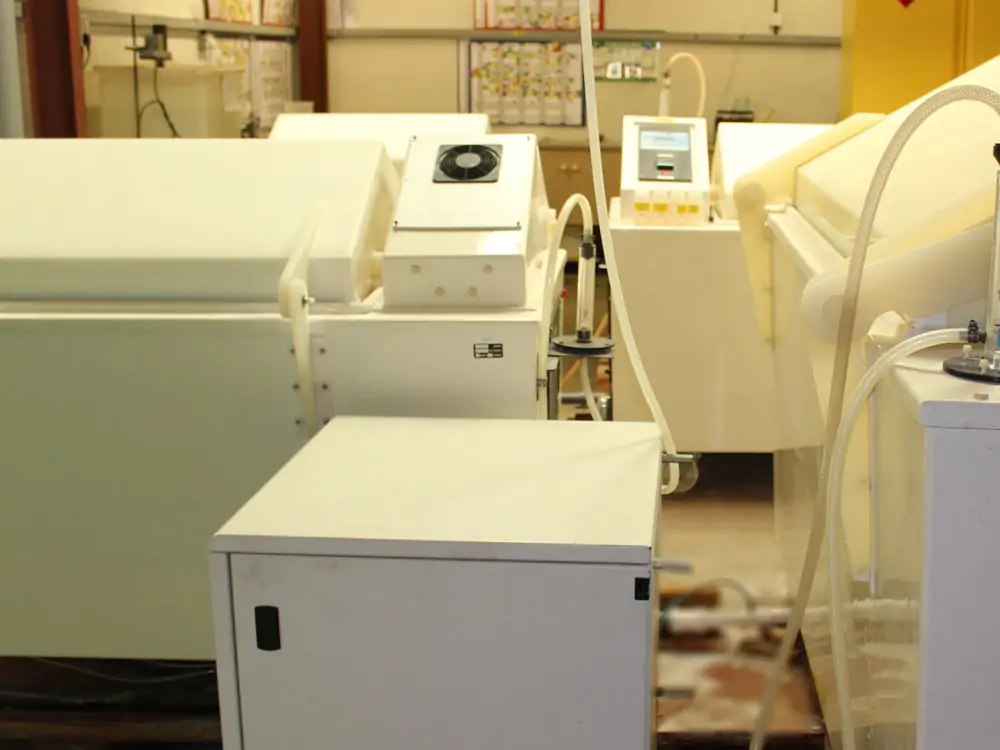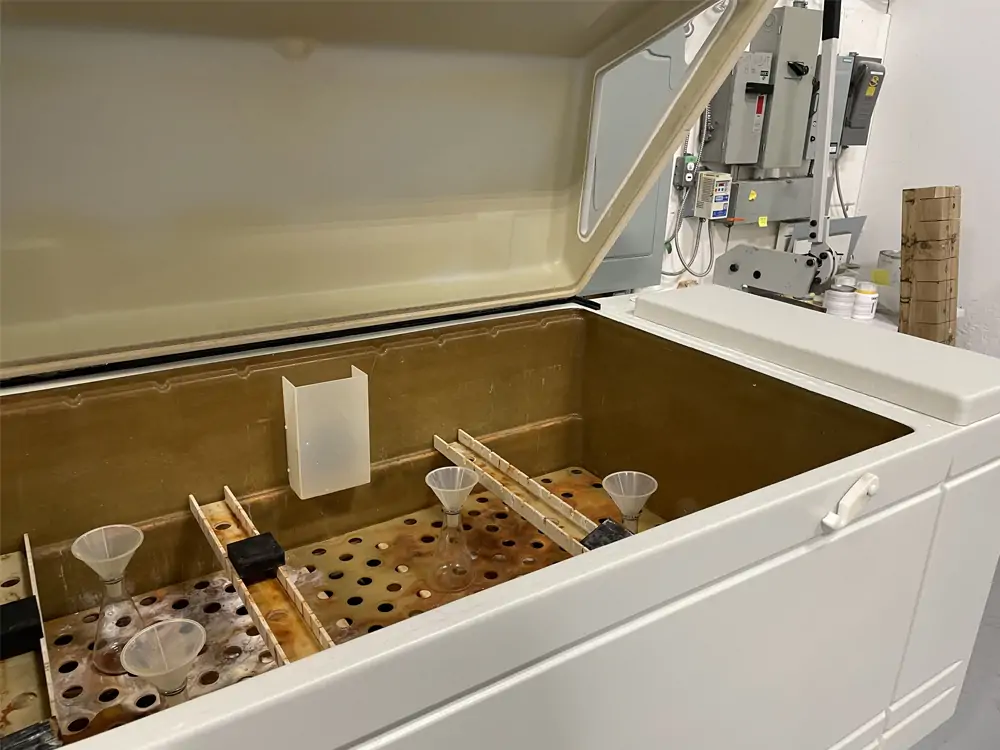In today’s world, materials face constant threats from corrosive environments. Corrosive conditions are a persistent hazard to materials in today’s society. As a result, product producers must guarantee product durability. One technique to assess a material’s resistance to corrosion is the Salt Spray Test. Testing is done on this material’s resistivity in a saline environment. Put another way, this test is often called the salt fog test. The salt spray test is essential for determining a material’s resilience. The automobile and aerospace sectors both conduct corrosion testing. Evaluating the effects of adverse environmental circumstances is the main goal. These include environments with a lot of salt.
Principle of Salt Spray Testing
Corrosion testing is a cornerstone in the evaluation of materials. If the materials undergo testing in a saline atmosphere, it provides invaluable insights. It shows results about the corrosion resistance of alloys and metals.
The main purpose is to create controlled environmental conditions. In this, the samples get exposed to salt-laden spray. this stimulates conditions that increase corrosion. This exposure helps researchers observe the material’s durability. This occurs over time and provides crucial data on the durability of the materials.

Types of Salt Spray Test for Corrosion
There are different types of salt spray testing. These tests determine the corrosion resistance of materials.
1. Neutral Salt Spray Test
The neutral salt spray test exposes materials to a mist of neutral pH salt spray. This test serves as a baseline for assessing a material’s general corrosion resistance. The neutral environment determines how the material reacts to the salt’s corrosive impact. This test works without the addition of acidic or alkaline conditions.
2. Acetic Acid Salt Spray Test
The acetic acid salt spray test requires a different environment for the materials. The acidic component of the salt spray is included in this test. This encourages the exposure of materials to acidic contaminants. The acetic acid amplifies the impact of corrosion. This offers a more accurate assessment of the material’s resistance to corrosion.
3. Copper-Accelerated Acetic Acid Salt Spray Test
The CASS test introduces copper acceleration. This involves the combination of copper and acetic acid. Thus, creates an environment that increases the reactions of corrosion. Copper enhances the corrosive impact. This makes the CASS test one of the best methods for the evaluation of materials. Especially those materials that are to be used in challenging environments.

Equipment Used in Salt Fog Test
There are 2 primary components of equipment useful in corrosion testing. These are salt spray chambers and sample preparation with mounting.
1. Salt Spray Chambers
The core of salt spray testing is the salt spray chamber. These rooms provide a regulated atmosphere. The materials are exposed to a spray mist that contains salt. This intensifies the corrosive environment. These chambers are designed to provide exact regulation. This covers temperature, humidity, and salt content. For test findings to be dependable and repeatable, accuracy is essential.
Components of Salt Spray Chambers:
Spray Nozzles: Disperse salt-laden mist evenly over test samples.
- Temperature Control Systems: Maintain a constant temperature within the chamber.
- Humidity Control Systems: Regulate humidity levels for accurate simulation.
- Salt Solution Reservoirs: Store the salt solution used to create the mist.
- Sample Racks: Hold and position test samples for exposure.
2. Sample Preparation and Mounting
The effectiveness of this test relies not only on salt spray chambers. But, also on the preparation and mounting of samples. Proper sample preparation ensures material’s surface gets exposed to salt spray. This allows a thorough assessment of corrosion resistance.
Steps in Sample Preparation and Mounting:
- Cleaning: Remove any contaminants or impurities from the sample surface.
- Masking: Protect certain areas of the sample from exposure if needed.
- Mounting: Affix the sample in a way that exposes the desired surface to the mist.
- Labeling: Mark samples for easy identification during and after testing.
Advantages of Salt Spray Test for Corrosion
- Salt fog test provides a controlled environment. This mimics the corrosive conditions. It allows for an accurate assessment of the material’s performance in a salt-laden atmosphere.
- Salt fog test speeds up the corrosion process. It delivers fast results compared to natural testing.
- This salt fog test applies to various materials. This includes non-metallic materials, metals, and alloys.
- The corrosion testing enables early detection of vulnerabilities. It allows manufacturers to address issues. Also, it prevents the production of faulty products.
- It is a cost-effective means to assess corrosion resistance. It offers a balance between accuracy and efficiency for manufacturers.
- It allows continuous monitoring and digital analysis during this testing. It enhances the precision of the testing process.
- The testing conditions in chambers are customizable. It is important to replicate specific environmental scenarios. It ensures proper assessments of the materials.
- Salt spray testing is an effective tool for a quality tool. It enables manufacturers to detect vulnerabilities in the process. It prevents the release of certain materials in the environment.
Disadvantages of Salt Spray Test for Corrosion
- Corrosion testing does not capture the complexity of real-world conditions.
- It focuses on salt corrosion and neglects other environmental factors.
- It is useful for accelerated testing. However, the results of this test do not predict the long-term behavior of the materials.
- Salt spray chambers can cause contamination. This affects the accuracy of test results. It requires regular cleaning and maintenance.
- Salt spray chambers have high maintenance requirements. This includes maintenance and calibration for accuracy. Thus, it increases the operational costs.
- This test focuses on chemical corrosion. It ignores the corrosion due to microbes that cause more contamination.
- There are certain changes in real-world corrosion. But it neglects the dynamic changes. This includes humidity levels and temperature fluctuations.

Applications of Salt Fog Test
Salt spray testing finds diverse applications across industries. Especially, where the durability of materials is paramount, let’s explore the applications of salt spray testing in ensuring product durability.
Automotive Industry
The salt fog test is useful to assess the resistance of vehicle components. This includes body panels, fasteners, and chassis. This ensures the automobiles withstand exposure to road salts. These salts are used for de-icing in many regions.
Aerospace Sector
A salt fog test is crucial for evaluating the corrosion resistance of aircraft components. It is important to ensure their safety and reliability. Materials used in aviation should withstand extreme conditions. It includes exposure to salt in coastal and marine environments.
Marine and Offshore Structures
Salt spray test plays a vital role in assessing the material resistance in marine. This includes marine structures, ships, and offshore platforms. It is important to ensure the longevity of the components in saltwater. Because corrosion is more likely to occur in saltwater environments.
Electronics and Electrical Components
Electronics and electrical components face exposure to various environmental conditions, including salt-laden air. Salt spray testing is used to evaluate their corrosion resistance. This ensures the reliability of electronic devices. Furthermore, it prevents premature failure due to corrosion.
Construction and Infrastructure
Corrosion testing is also useful in the construction industry. This assesses the resistance of materials such as tunnels, bridges, and other infrastructure. It helps to select materials that withstand exposure to de-icing salts. If the materials withstand the exposure, it enhances the lifespan of structures.
Final Thoughts on Salt Spray Testing
The salt spray test is a fundamental technique in material testing. This test verifies the dependability, excellence, and longevity of different items. As we discuss the significance of spray testing, it becomes clear that the applications are extensive. It helps materials that are subjected to corrosive situations last longer. Promoting the extensive application of this testing is crucial. It is an appeal to improve the product’s quality rather than a recommendation. As businesses strengthen themselves against corrosion, this ensures the durability of products.
For more environmental test chamber, Please visit: https://chiuventionclimatechamber.com
For more environmental test simulation programmes,environmental testing knowledge, instrument knowledge, and environmental testing laboratory knowledge, please contact us: [email protected]